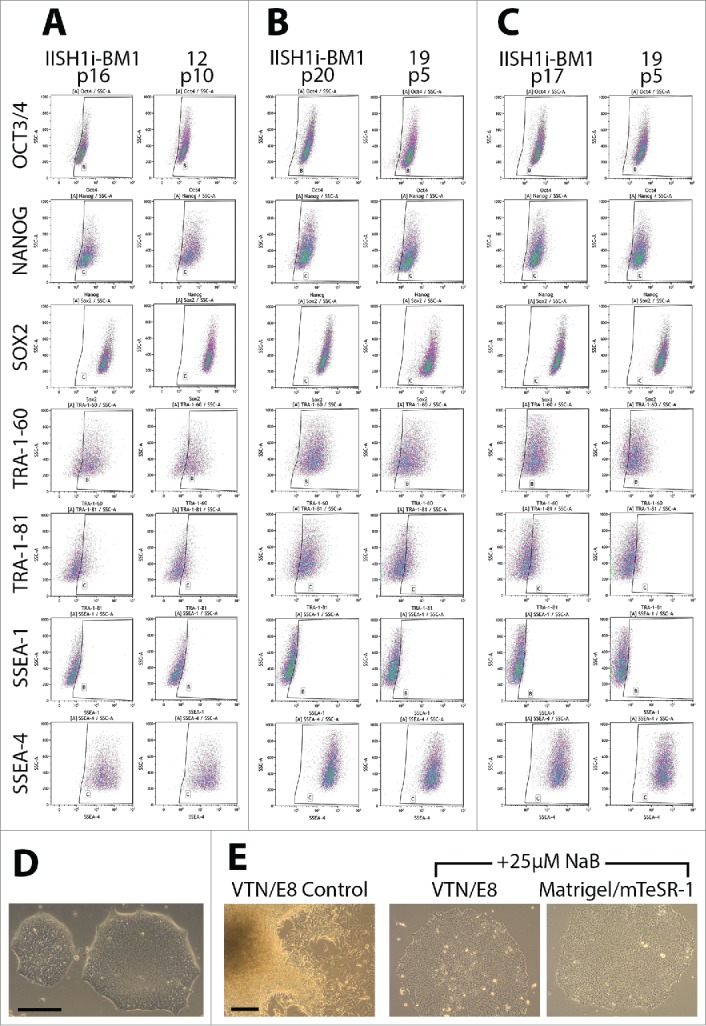Figure 3.

Analysis of ESC marker expression in fully reprogrammed AFSC and facilitation of full pluripotency acquisition by butyrate treatment in AFSC reprogrammed using episomal plasmids. (A) Flow cytometric analysis of ESC marker expression in fully reprogrammed AF-iPSC[12] (retroviral reprogramming) at passage 10 cultured on VTN-coated plates in E8 medium. The expression profile was analyzed alongside an episomally derived IISH1i-BM1 control iPSC line. (B) Flow cytometric analysis of ESC marker expression in AFSC reprogrammed using episomal plasmids in E8 medium on VTN. All 3 lines of AF-iPSC (19, 20A, D1) showed ESC marker expression profile comparable to that of the control line. (C) Flow cytometric analysis of the expression of ESC-specific markers in iPSC grown on Matrigel-coated plates in mTeSR-1 medium. As observed for VTN/E8-grown lines, all 3 lines of AF-iPSC showed ESC marker expression profile comparable to that of the control line. Matrigel and mTeSR-1 medium did not support the episomal reprogramming process and only fully reprogrammed AF-iPSC could be expanded in this condition. (D) Morphology of the colonies of retrovirally reprogrammed AF-iPSC[12], consistent with pluripotency. (E) Differences in morphology of partially reprogrammed AFSC cultured with no histone deacetylase inhibitor versus ultimately fully reprogrammed cells in conditions supplemented with 25 µM sodium butyrate – E8 medium on VTN and mTeSR-1 medium on Matrigel. Partially reprogrammed epithelioid cells were small and formed compact dome-shaped colonies, with a phase-bright edge. Fully reprogrammed cells were bigger with high nucleus-to-cytoplasm ratio and formed flat colonies with a clearly defined phase-bright edge representing the typical pluripotent stem cell colony morphology. Sodium butyrate enabled progression of partially reprogrammed cells to full pluripotency, otherwise the episomal reprogramming efficiency was prohibitively low. Scale bars = 200 µm.
